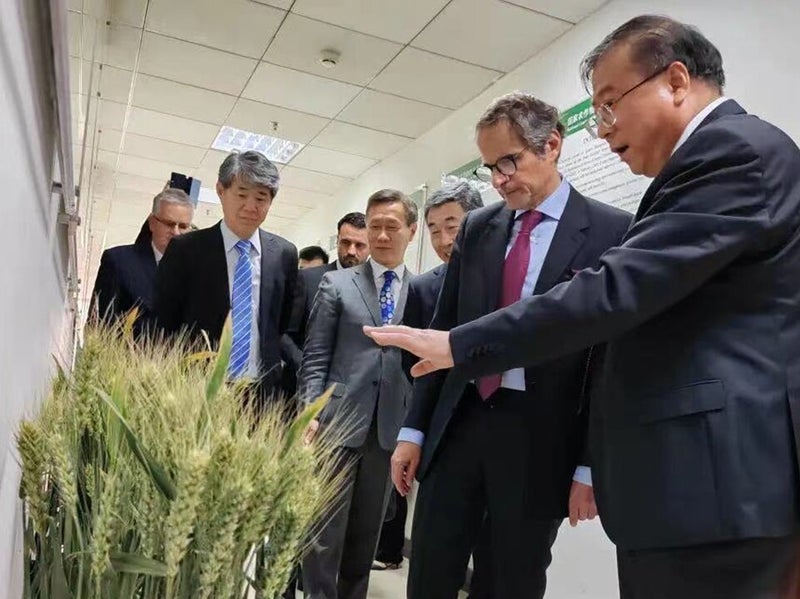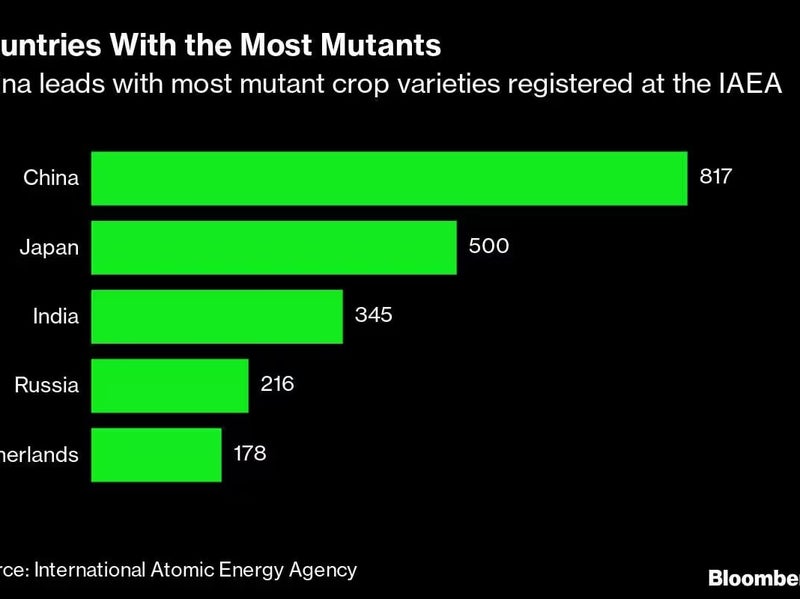CHINA
The Good, The Bad, and The Ugly
Apocalypse Hits China: Black Clouds of Bugs, Frogs and Crows Everywhere, and Flowers from the Abyss
flying birds swarming in Sichuan, the sky is filled with crows. Netizens said they've never seen so many crows flying continuously from day to night, which just doesn't seem normal.
Apocalypse Hits China: Black Clouds of Bugs, Frogs and Crows Everywhere, and Flowers from the Abyss
That headline mashes together real but unrelated stuff: southern China is dealing with a big chikungunya outbreak that’s driven aggressive anti-mosquito campaigns (so you’ll see more spraying, traps, and bug chatter), but that’s public health—not an omen; huge crow swarms are a normal winter behavior called communal roosting that can number in the tens or even hundreds of thousands; mass frog appearances after heavy rains are a well-documented migration/breeding pulse seen worldwide; the viral “worm rain” clip from China was previously debunked as poplar tree catkins, not falling annelids; and “flowers from the abyss” points to legitimate deep-sea finds by Chinese-led teams—chemosynthetic communities at extreme depth—fascinating science, but not apocalyptic.
Put simply: outbreaks, weather and wildlife cycles, plus sensational edits, can look like a single doomsday narrative when stitched together, yet each piece has a grounded explanation.
Please Like & Share 😉🪽
@1TheBrutalTruth1 Oct 2025 Copyright Disclaimer under Section 107 of the Copyright Act of 1976: Allowance is made for “fair use” for purposes such as criticism, comment, news reporting, teaching, scholarship, education, and research.
There is a massive coverup going on in China over school lunches.
More recently, in September, Shanghai parents complained that canteen shrimp “smelled off,” triggering abrupt menu changes and police involvement with a large city caterer. Coverage linked the uproar to broader anxiety about pre-made or centrally supplied school meals.
But online CCP shills are trying to convince you China beats the US.
China’s School Lunch Scandals: Parents Push Back, Officials Promise Crackdowns
A wave of reports from across China suggests serious problems with school meals—from spoiled seafood in Shanghai to a lead-poisoning scandal in Gansu—fueling claims of a cover-up culture and prompting new official probes.
In July, authorities in Tianshui, Gansu province said more than 200 kindergarteners showed abnormally high blood-lead levels after staff added pigment to food to make it look more appealing. Police detained multiple people, and national outlets and wire services documented hospitalizations and investigations. Parents and commentators alleged local officials initially tried to muffle the story.
Follow-up reporting described attempts to falsify tests and hush complaints, with additional probes launched into cadres and health units. Major international and regional outlets framed the case as a test of transparency after past food scandals.
More recently, in September, Shanghai parents complained that canteen shrimp “smelled off,” triggering abrupt menu changes and police involvement with a large city caterer. Coverage linked the uproar to broader anxiety about pre-made or centrally supplied school meals.
Officials highlight enforcement wins and new guidance—courts publicized penalties for expired snacks near schools and ministries have touted tighter school-meal rules. Critics counter that penalties often arrive after social-media outcry, reinforcing concerns that problems are addressed only once they become public.
Public memory of earlier crises—like 2019’s moldy-food protests in Chengdu—keeps skepticism high. Parents say they rely on videos, chat groups, and independent reporters to force action when local oversight falls short.
Sources
AP News; Bloomberg; South China Morning Post; The World of Chinese; China Skinny; China Daily/English court site; People’s Daily Online (policy overview); Sixth Tone; ABC (Australia). https://apnews.com/article/26e13879806d4abe44c7dae892c191c0?utm
https://apnews.com/article/26e13879806d4abe44c7dae892c191c0?utm
https://www.sixthtone.com/news/1003681/moldy-food-in-sichuan-school-sparks-outcry%2C-investigation?utm
https://english.court.gov.cn/2025-09/22/c_1127321.htm?utm
https://chinaskinny.com/blog/shanghai-school-lunch-scandal?utm
https://www.thetimes.co.uk/article/china-poisoning-kindergarten-children-lead-swtvtvnbp?utm
https://www.livemint.com/news/world/china-kindergartners-battle-high-lead-levels-from-school-meals-11751966248673.html?utm
https://www.theworldofchinese.com/2025/09/chinas-new-wave-of-backlash-against-pre-made-food/?utm
Please Like & Share 😉🪽
@1TheBrutalTruth1 Sept 2025 Copyright Disclaimer under Section 107 of the Copyright Act of 1976: Allowance is made for “fair use” for purposes such as criticism, comment, news reporting, teaching, scholarship, education, and research.
Seeds Rewritten: China’s Push into Mutated Crops
The idea that “China’s food has mutated” sounds dramatic. But it isn’t just clickbait. China is investing heavily in mutation breeding—deliberately introducing changes in plants’ genetics to try to produce traits like higher yield, resistance to drought, or disease tolerance. The question: how far might this go, and what risks or benefits come with it?
What is mutation breeding?
On September 12, a woman in China discovered two strangely shaped "watermelons" in a melon field. The top half looked like a watermelon, but the bottom half looked like a winter melon. Netizens joked that this was a new variety called "Little Wintermelon Watermelon." However, some speculated that this odd shape was due to too many pesticides, causing a mutation. One person even said, "I wouldn’t dare eat it."
China’s Food Has Mutated, Stop Eating It! The Bottom Line Is Gone, Even Seeds Are Problematic
The idea that “China’s food has mutated” sounds dramatic. But it isn’t just clickbait. China is investing heavily in mutation breeding—deliberately introducing changes in plants’ genetics to try to produce traits like higher yield, resistance to drought, or disease tolerance. The question: how far might this go, and what risks or benefits come with it?
What is mutation breeding?
Mutation breeding means intentionally creating genetic changes (mutations) using radiation or chemicals, then selecting the changes that appear helpful. Scientists cause many random changes and then weed out the ones with harmful effects. The goal is to discover new traits that nature by itself would take much longer to evolve.
These methods differ from inserting foreign genes (the classic “GMO” approach). Instead, they push variation within the plant’s own DNA.
One recent review shows China has made progress in using radiation-induced mutation breeding for rice—giving insights into how to select for yield, stress tolerance, or disease resistance.
What’s China already doing?
-
China has registered 1,050 irradiation-induced mutant crop varieties across dozens of species. https://www.globaltimes.cn/page/202305/1291373.shtml?utm
-
More than 300 of those are from “space-induced” seeds—seeds exposed to cosmic radiation or microgravity in space missions. https://www.globaltimes.cn/page/202305/1291373.shtml?utm
-
The Chinese Academy of Agricultural Sciences says mutant varieties developed there account for a large share of the world’s mutant crop registry. https://www.caea.gov.cn/english/n6759361/n6759362/c6806172/content.html?utm
-
China has also approved new gene-edited crops in recent years—combining mutation techniques with more precise editing tools. https://www.reuters.com/markets/commodities/china-approves-more-gm-crops-boost-yields-ensure-food-security-2024-12-31/?utm
China’s rapid build-out of “mutant” crop lines isn’t just about higher yields—it’s about leverage: by registering more than a thousand irradiation-induced varieties and even breeding seeds after space exposure, Beijing is mass-producing genetic options it can scale or withhold as policy tools while portraying them as routine science; official outlets tout the numbers, CAAS highlights its share of the global registry, and regulators are green-lighting gene-edited staples, yet the public proof still rides state-mediated claims, scattered lab write-ups, and curated field results like the widely planted, drought-tolerant Luyuan-502 wheat—so the prudent read is that China is engineering agricultural dependence at home and abroad under the banner of food security, with genuine agronomic gains on one side and opaque risk management on the other.
What the “mutation” claim doesn’t automatically mean
Calling crops “mutated” can sound sinister, but it mostly describes an old plant-breeding toolbox: researchers create lots of tiny DNA changes, keep the few that improve yield or resilience, and discard the rest; the result usually stays within the plant’s own genome rather than splicing in outside genes, and promising lines still face years of field trials, nutritional checks, and regulatory review before they reach farms or grocery shelves. That doesn’t mean every risk vanishes—unexpected traits can emerge under stress, ecosystems can behave in surprising ways, and oversight can be uneven across countries—but it does mean the label itself doesn’t prove harm, intent, or a plot. The real test is transparency and verification: clear trait disclosure, independent safety data, and long-term monitoring that can catch problems early. Until then, “mutation” is a method, not a verdict, and it needs evidence—not fear or marketing—to judge its outcomes
The possible risks and unknowns
While mutation breeding holds promise, several cautions remain:
-
Unintended traits: Some mutated plants might carry hidden vulnerabilities or traits that only emerge under stress.
-
Ecological spillover: If mutant varieties cross with wild plants, traits may spread unexpectedly.
-
Health concerns: Long-term effects, allergens, or nutritional shifts need study.
-
Transparency: If modification is opaque, consumers may lose trust.
-
Regulation gaps: Some countries have weak oversight of new crop technologies.
For instance, a study on pea plants exposed to neutron radiation showed big yield increases—yet some nutritional differences also emerged. https://arxiv.org/abs/2106.00269?utm
In vegetables too: researchers in China made a large mutant collection of Chinese cabbage to explore traits. But the full picture of how these changes affect nutrition or ecology is still being built. https://www.nature.com/articles/s43016-022-00486-y?utm
Why China is pushing this so aggressively
China’s hard push into mutation breeding looks like food security on the surface and state power underneath: with only a sliver of the world’s arable land and a huge population, Beijing wants crops that beat drought, heat, and pests, but it also wants seed sovereignty so sanctions or foreign patents can’t choke its food supply; by accelerating homegrown varieties—some created through radiation or space exposure, others tweaked with gene-editing—China shortens breeding cycles, reduces dependence on Western firms, and builds leverage over export markets that may need its seed lines later. Supporters call it smart insurance in a harsher climate. Skeptics see a strategic stack: patented seeds that lock in farmer reliance, state labs that can toggle traits faster than regulators can test them, and data-rich ag platforms that map soils, yields, and inputs at national scale—useful for planning, and in a crisis, useful for control. In that reading, higher yields are the selling point, but the deeper prize is command of the entire food pipeline—from the genome to the warehouse—so that China can feed itself in a pinch and shape other countries’ choices when supplies are tight.
Two perspectives: cautious optimism and critical watch
On one hand, mutation breeding is a known scientific method used all over the world. It can yield beneficial traits faster than traditional breeding.
On the other hand, when done at scale and with little transparency, it raises questions about safety, oversight, ecosystem impact, and consumer rights.
It’s neither wholly dangerous nor wholly miraculous. The reality depends on how carefully it’s managed, tested, and regulated.
Sources
-
“China develops 1,050 irradiation induced-mutant varieties” — Global Times / China crop science reporting https://www.globaltimes.cn/page/202305/1291373.shtml?utm
-
“Progress on radiation-induced mutation breeding of rice in China” — academic review https://www.researching.cn/articles/OJ39d72bba803ea5f0?utm
-
“How Nuclear Techniques Help Feed China” — Chinese Academy of Agricultural Sciences / CAEA & IAEA cooperation article https://www.caea.gov.cn/english/n6759361/n6759362/c6806172/content.html?utm
-
“China approves more GM crops to boost yields” — Reuters on gene-editing moves https://www.reuters.com/markets/commodities/china-approves-more-gm-crops-boost-yields-ensure-food-security-2024-12-31/?utm
-
“Mutant resource for Chinese cabbage” — study in Nature Food Natuhttps://www.nature.com/articles/s43016-022-00486-y?utm
-
“Study on the mutagenic effects in the soybean genome” — Chinese mutagenesis research article Maximum Academic Prhttps://www.maxapress.com/article/doi/10.48130/tp-0025-0003?utm
-
“IAEA launches Plant Mutation Breeding Network for Asia & the Pacific” — IAEA press https://www.iaea.org/newscenter/news/accelerating-growth-iaea-launches-plant-mutation-breeding-network-for-asia-and-the-pacific?utm
Please Like & Share 😉🪽
@1TheBrutalTruth1 Sept 2025 Copyright Disclaimer under Section 107 of the Copyright Act of 1976: Allowance is made for “fair use” for purposes such as criticism, comment, news reporting, teaching, scholarship, education, and research.



China in Revolt: Smuggled Bioweapons, Factory Explosions, and the Global Power Play
In the underground communities of alternative media and deep-state forums, a dark narrative is forming around China’s relationship with both its own citizens and the global stage. Here’s how this shadowy storyline is shaping up
THE BRUTAL TRUTH FRINGE REPORT
In the underground communities of alternative media and deep-state forums, a dark narrative is forming around China’s relationship with both its own citizens and the global stage. Here’s how this shadowy storyline is shaping up:
Factories Keep Exploding All Over China - Coordinated Attack? Chinese Bioweapon in US - Episode #266
First, explosive accusations have surged around the alleged smuggling of a "bioweapon" into the United States: a fungus known as Fusarium graminearum, capable of destroying staple crops like wheat, corn, and rice. Federal charges filed last week state that two Chinese researchers working at U.S. institutions attempted to bring the fungus—possibly manipulated—into the U.S. for covert agroterrorism purposes economictimes.indiatimes.com+5washingtonpost.com+5nypost.com+5. The case is being invoked as part of a larger concern: that China, under the guise of academic exchange, is planting the seeds of economic and nutritional collapse in America.
Next, reports are emerging of spontaneous factory explosions and deliberate sabotage across Chinese industrial zones. Workers, trapped between plummeting wages and increasing repression, are said to be striking back. Recent protests include cases of arson in textile plants over withheld pay, and targeted blow-ups of local factories suspected of enforcing draconian labor controls . Fringe sources interpret this not as isolated incidents, but as a ripple of civil rebellion that could soon coalesce into a nationwide uprising.
Adding more intrigue: the “Trump vs. Elon” saga—sought as a tough stance against China—has reportedly sent Beijing’s elite into chaos. Chinese officials are said to be scrambling to decide whether to align with Musk’s ventures or fight back against Trump-led sanctions. Some conspiracy voices claim this division in the U.S.—coupled with China’s tech fears—has weakened Xi’s grip, thus emboldening internal protests and sabotage operations.
Put together by fringe networks, the narrative forms a compelling scenario:
-
Technocrat infiltration — China’s alleged bioweapon program reaches into academia abroad.
-
Domestic rebellion — Factory strikes escalate into covert sabotage.
-
Global strategic fallout — U.S. competitors like Musk threaten China’s technological supremacy, fracturing alliances.
From this angle, the smuggling scandal and domestic unrest are seen not as unrelated events, but as hallmarks of a CCP in crisis—balancing power externally while struggling to suppress uprising within.
These gatherings of shadow truths may be unverified or exaggerated, but they’re becoming popular in select info outlets. Whether based on real intelligence funnels, imagined conspiracies, or both, they speak to deep anxieties: about biosecurity, global dominance, and a rising power dealing with its own cracks.
Let me know if you’d like to expand on:
-
China’s agroterrorism accusations and U.S. countermeasures.
-
Profiles of escalating worker dissent inside China’s factory belt.
-
How global tech power plays center on Musk, Trump, and China’s future.
THE BRUTAL TRUTH JUNE 2025
The Brutal Truth Copyright Disclaimer under Section 107 of the Copyright Act of 1976: Allowance is made for “fair use” for purposes such as criticism, comment, news reporting, teaching, scholarship, education, and research.

